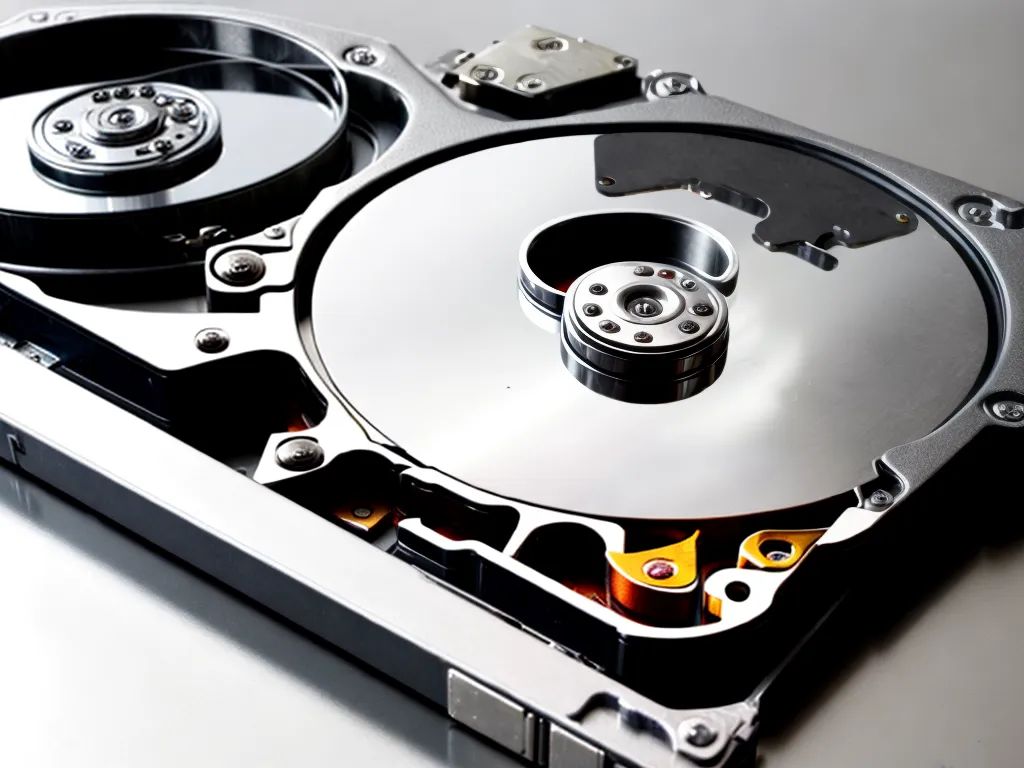
Understanding Hard Drive Failure
Hard drives can fail for a number of reasons, leading to potential data loss. As the owner of a failed hard drive, I need to understand why hard drives fail in order to evaluate my options for recovering my data.
Common Causes of Hard Drive Failure
- Logical failures – Corruption of the file system or operating system that prevents access to data. Usually fixable with software tools.
- Mechanical failures – Physical damage to disk platters, read/write heads, motors or connectors. Often requires data recovery services.
- Electronic failures – Damage to circuit boards or internal chips. Difficult to repair without spare parts.
I should investigate the type of failure my drive has experienced to determine the best recovery method. Logical failures have the highest success rates for DIY data recovery.
Signs of Hard Drive Failure
- Strange noises – Clicking, beeping, grinding or squealing sounds indicate mechanical issues.
- Not recognized – If the drive is not detected by the OS, the control board could be damaged.
- Slow response – Frequent freezing or slow file transfers signify problems.
- Error messages – Messages like “disk not formatted” point to logical failures.
I need to watch for these failure symptoms to catch issues early before extensive data loss occurs. Acting quickly is key.
Evaluating DIY Data Recovery Methods
Depending on the cause of failure, I may be able to recover my data without professional help. DIY methods could save time and money.
Software-Based Data Recovery
- Advantages: Inexpensive, avoids opening the drive.
- Disadvantages: Limited capabilities for physical recovery.
Specialized software like Ontrack EasyRecovery can rebuild corrupted partitions and recover deleted files if the drive is readable. This is the easiest first step I should try.
Cloning the Drive
- Advantages: Allows read-only access without harming original.
- Disadvantages: Requires identical replacement drive.
Using disk cloning tools like Clonezilla, I can duplicate the drive to a new device, then run scans or try repairs on the copy. This prevents damaging the old drive further.
Repairing the Circuit Board
- Advantages: Quick fix if board is the only damaged part.
- Disadvantages: Advanced soldering skills required.
If my drive has electrical damage localized to the controller board, I may be able to swap in a matching donor board to regain functionality. This requires expertise with soldering and electronics.
Opening the Drive in a Cleanroom
- Advantages: Direct access to internal parts for repairs.
- Disadvantages: Very technical, high risk of contamination.
With proper equipment like an ESD mat and cleanroom tools, I can open the drive chassis to directly fix or replace damaged components. However, this is extremely risky for amateurs due to dust concerns.
Choosing a Professional Data Recovery Service
For drives with mechanical failure or serious logical corruption, I should turn to data recovery experts for help restoring my data.
Data Recovery Process Overview
- Physical inspection – The drive is examined for visible damage and failure points.
- Data imaging – The drive is cloned to a healthy device if possible.
- Repair attempts – Specialized tools are used to repair the drive or extract data.
- Data transfers – Retrieve data is copied to new media or storage devices.
Factors to Consider When Choosing a Service
- Success rates – Check ratings and reviews of their recovery capabilities.
- Cleanroom facilities – Class 10 ISO 4 cleanrooms or better provide the best environment.
- Security – Vet their data handling policies and physical security.
- Cost – Quotes are usually free, but compare prices between a few providers.
Types of Professional Data Recovery Firms
- Local IT shops – Computer repair stores sometimes offer basic recovery services.
- Mail-in recovery centers – Ship your drive to a dedicated recovery lab.
- In-lab service – Travel to a cleanroom facility and get direct support.
For business-critical data or large personal drives, an established recovery firm like DriveSavers or Kroll Ontrack may provide the best results.
Preventing Hard Drive Failure
While quality drives can fail unexpectedly, there are steps I can take to extend their lifespan and avoid failures:
- Maintain a stable temperature and humidity in the storage environment.
- Handle drives gently and protect against impacts.
- Backup data regularly to minimize reliance on a single drive.
- Periodically scan drives using built-in disk utilities.
- Upgrade drives proactively as they age to avoid deterioration.
Careful handling, balanced workloads and redundancy are key to maximizing uptime. But when failures inevitably occur, understanding my options for professional and DIY recovery can help protect my irreplaceable data.












